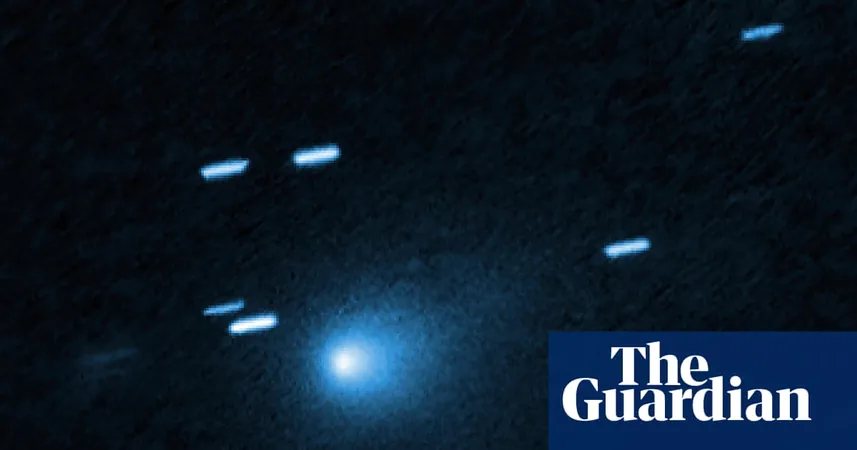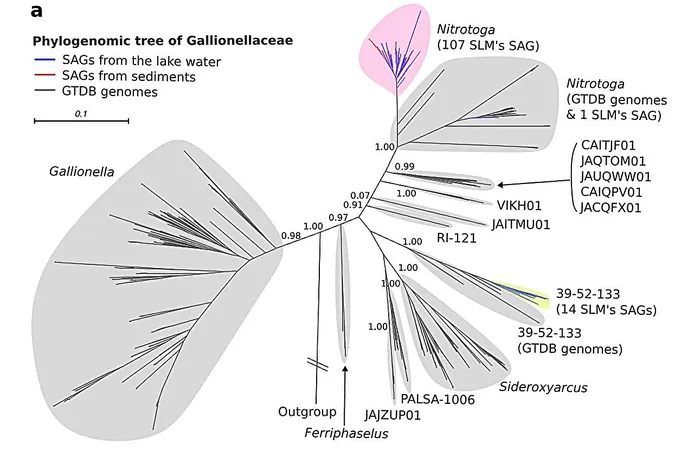
NASA Dismisses Claims of Alien Technology in Unusual Comet
2025-09-11
Author: Ming
NASA Challenges Extraterrestrial Hype
In a recent twist of space speculation, NASA has firmly rejected a claim by a Harvard astronomer suggesting that a peculiar comet may be a remnant of an extraterrestrial civilization. The comet, known as 3I/Atlas, is scheduled to make a close approach to Mars next month.
The Controversial Hypothesis
Avi Loeb, the head of Harvard’s Galileo Project, stirred up controversy with his bold assertion in a July paper that Comet 3I/Atlas could be an artificial object. This theory stemmed from the comet's unexpected trajectory and the lack of gaseous tails typically found in standard comets from our solar system.
A Dire Warning?
Loeb went further, speculating that the comet could execute covert maneuvers behind the sun, hinting at the possibility of a sinister rendezvous with Earth. He warned that if his thesis holds any validity, the consequences could be catastrophic, necessitating potential defensive measures.
NASA’s Scientific Response
However, NASA experts are unimpressed. They have closely monitored the comet through advanced telescopes and confidently state that it poses no threat to Earth. Tom Statler, NASA's lead scientist for solar system small bodies, stated, "It looks like a comet. It does comet things. It very strongly resembles, in just about every way, the comets that we know." He emphasized that while some properties may differ, the evidence overwhelmingly suggests it's a natural comet.
Remarkable Speed and Size
Recent imagery from the Hubble Space Telescope indicates that the comet, measuring up to 3.5 miles wide, travels at a staggering 130,000 mph—making it the fastest-known visitor to our solar system. Despite its anomalies, Statler noted that all comets exhibit unpredictable behaviors due to their complex compositions of dust and ice, heating up as they approach the sun.
A New Era of Discovery
This comet is particularly significant; it represents one of just three documented interstellar objects. Statler pointed out that discovering such comets provides unprecedented insights into the composition of other solar systems. He noted, "It's special because we now have the ability to discover these interstellar comets."
Curiosity and Hypothesis
Acknowledging the excitement around his hypothesis, Loeb admitted that the simpler assumption is that 3I/Atlas is indeed a comet. He views the exploration of alternatives as essential for challenging established beliefs, encouraging a spirit of curiosity in the pursuit of knowledge. "Let us instead maintain our childhood curiosity and seek evidence rather than pretend to be the adults in the room that know the answers in advance," he stated.
Final Thoughts
As the comet approaches, scientists and space enthusiasts alike can look forward to what this cosmic traveler reveals, grounded in reality rather than speculation. The exploration continues, and who knows what discoveries lie ahead!



 Brasil (PT)
Brasil (PT)
 Canada (EN)
Canada (EN)
 Chile (ES)
Chile (ES)
 Česko (CS)
Česko (CS)
 대한민국 (KO)
대한민국 (KO)
 España (ES)
España (ES)
 France (FR)
France (FR)
 Hong Kong (EN)
Hong Kong (EN)
 Italia (IT)
Italia (IT)
 日本 (JA)
日本 (JA)
 Magyarország (HU)
Magyarország (HU)
 Norge (NO)
Norge (NO)
 Polska (PL)
Polska (PL)
 Schweiz (DE)
Schweiz (DE)
 Singapore (EN)
Singapore (EN)
 Sverige (SV)
Sverige (SV)
 Suomi (FI)
Suomi (FI)
 Türkiye (TR)
Türkiye (TR)
 الإمارات العربية المتحدة (AR)
الإمارات العربية المتحدة (AR)